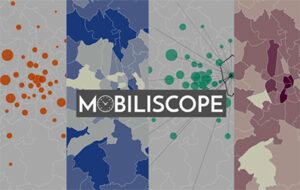 Julie Vallée, Senior researcher at the CNRS, is invited to Norrköping in Sweden to give a talk in Institute for Analytical Sociology (IAS) seminars on the topics of analytical sociology and computational social science.
Julie Vallée, Senior researcher at the CNRS, is invited to Norrköping in Sweden to give a talk in Institute for Analytical Sociology (IAS) seminars on the topics of analytical sociology and computational social science.
The topics discussed during the seminars often focus on the core areas of IAS – analytical sociology, organizational dynamics, segregation dynamics, and cultural dynamics. More recently, the Institute for Analytical Sociology also hold the International Roundtable on Computational Social Science with presentations of leading international CSS scholars.
The talk will be given Thursday, May 23 14:30 CET
on site, KO301, Campus Norrköping, Sweden
& online on Zoom
Join Zoom Meeting
https://liu-se.zoom.us/j/65535789369
Meeting ID: 655 3578 9369
Daytime changes in urban segregation and neighbourhood composition according to people’s daily mobility
Julie Vallée (CNRS, Géographie-cités laboratory, Paris, France)
Abstract. Hourly variations in the spatial distribution of gender, age and social class within cities remain poorly explored and combined in the segregation literature, which tends to focus on residential locations from a single social dimension. Such a blind spot is unfortunate because the spatial and temporal constraints that social subgroups face unequally in their daily lives not only translate into differences in how they move, but also generate different spatial patterns of co-location and segregation across cities. Based on mobility surveys covering 58 cities and their suburbs in France, Canada and South America (968,000 respondents and 2.9 million trips), we have developed a platform (the ‘Mobiliscope’) available online (www.mobiliscope.cnrs.fr) in three languages, together with open access to code and output data. This platform provides interactive maps and graphs to compare neighbourhood composition and urban segregation over the 24 hours of a typical weekday. Such hourly information can be broken down according to the demographic and social profile of the ‘ambient’ people, but also according to the activities they engage in and the modes of transport they use. After a short demo of the ‘Mobiliscope’ platform, I will present and discuss some empirical analyses on hourly variations in (1) social mix across neighbourhoods and (2) social segregation across cities.


